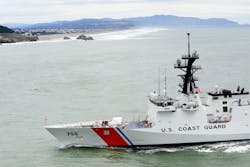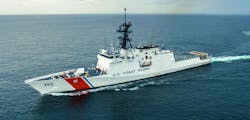For Starters, Look to Hydraulics
Download this article as a .PDF
Most of us are familiar with the starting systems in our cars. Electrical power is stored in a battery, and an alternator keeps the battery charged when the engine is running. Activating the car’s ignition switch creates a circuit that routes a surge of electrical power from the battery to a starter motor. There’s a little more to it, like solenoids, regulators, and such, but it’s a simple system that has remained relatively unchanged for decades.
Shortcomings of Electrics
But as simple as an electrical starting system is, several potential problems exist. Any of several contacts or connectors can corrode to prevent electrical power from reaching the starter motor. Extreme temperatures—hot or cold—can prevent the battery from providing enough power to start the engine. Plus, starter motors are designed only for intermittent duty. That’s because they’re expected to run for only a few seconds to start an engine. Once the engine is running, the starter motor may not be needed again for several minutes, hours, or days.
Malfunctions of the starting system in our personal vehicles are usually just an inconvenience. They may rob us of time or money, but they usually aren’t a major catastrophe. Starting problems in commercial vehicles can be more costly, but still can be dealt without any long-lasting effects. Not so with submarines, ships, marine equipment, and even mining and other land-based equipment.
The corrosive effects of marine environments make electrical starting systems less reliable. But perhaps more importantly, the electric motor and array of batteries needed to start an engine rated for thousands of hp would be impractical. No wonder, then, that the U.S. Navy, U.S. Coast Guard, and similar organizations use non-electric systems to prevent reliability problems.
Non-Electric Alternatives
Two common non-electric starting techniques are hydraulic and pneumatic. Both store energy as a compressed fluid and route the pressurized fluid to a hydraulic or air motor to start a large engine. A third technique is a spring engine, the simplest of all. And unlike batteries, all three of these non-electric solutions are virtually unaffected by environmental temperature extremes. They are just as effective in the arctic as they are in the tropics. In fact, even if a hydraulic or pneumatic system lost pressure, a manual pump could be used in an emergency to restore the pressure enough to start the engine.
The UK’s IPU Group, West Bromwich, UK, has provided hydraulic engine starting systems to the U.S. Coast Guard and British Navy. To illustrate the ruggedness of these systems, IPU’s James Weavin revealed, “One application required our starting system to be blast tested alongside an engine to 51 G. At the end of the test the only equipment still working was our hydraulic start system.”
American Commercial Barge Line (ACBL), Jeffersonville, Ind., has benefitted from these advantages. ACBL transports cargo across the U.S. inland waterway system from Texas to Minnesota. Its barges work in temperatures between -23°F to 100°F (-30°C to +40°C). Electric starting systems struggle for reliability in such extremes of temperature, so ACBL sought an alternative.
IPU’s answer was to install non-electric starting systems for diesel engines up to 150 l (9,154 in.3). With both spring and hydraulic starting systems for their various engines, ACBL benefits from vastly improved reliability, which translates to less downtime, lower maintenance costs.
Learn more about Industrial Power Units (IPU) Ltd. HERE.




